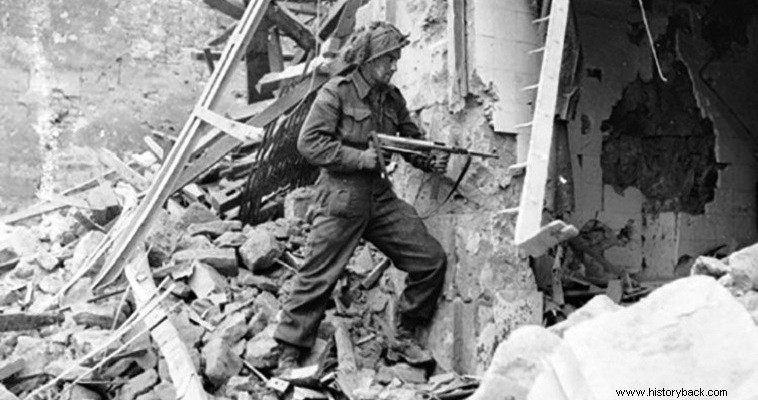
On June 6, 1944 the Canadian 3rd Infantry Division (IDF) landed on Juno Beach and the British 3rd Infantry Division landed on Sword Beach. The mission of these two divisions was, immediately after securing a bridgehead, the advance and capture of the city of Kan and the bridges on the river Orn.
The Canadians were to capture the airport of Caprique, southwest of Caen, while the British had as their objective (ANSK) the city as such . The British 50th MP, on the "Gold" coast, had the mission of securing the link with the Americans, further west.
The two No. 3 divisions moved towards their ANSKs, with the British one falling literally on top of the German 21st Panzer Division (MPa) which was taking up a position to counterattack against the enemy bridgehead , after wasting the entire morning of June 6 chasing British paratroopers.
Fatefully the British advance was halted. The Canadians also halted their advance so as not to expose their left flank. This delay was fatal. When they attempted to move the next day, they were again confronted by the 12th SS SS (Hitler Youth Division), which had arrived in the area on the night of June 6-7.
In an inspired move the Germans literally smashed the Canadian 9th Infantry Brigade (I/P) and its supporting tanks . Nevertheless, the German counter-attacks with the aim of completing the success and the "throwing" of the Canadians into the sea failed dramatically. The 12th SS struggled for four days to break through the enemy positions but failed with heavy losses as the Canadians were reinforced with new forces on the one hand and the omnipresent Allied air force dominated and forbade even the slightest German maneuver.
Desperate, also lacking infantry support, as the neighboring German 716th MP had been destroyed, the 12th SS went on the defensive and was reduced to monitoring the enemy . Further west, the elite German "Lehr" BA attempted to eliminate the British bridgehead on the "Gold" coast but also failed despite being the strongest German armored formation in Normandy, for the same reasons that the 12th SS failed.
Meanwhile the British 6th Airborne Division had carried out an airborne assault east of Caen from the early hours of June 6. The paratroopers managed to make contact with the Allied bridgehead via the Benouvig Bridge over the Orne while threatening the German second position with disruption, supported by the artillery of the British I Corps and the heavy guns of the support ships.
Second attempt
Having failed to capture Caen with the attack of the 3rd MP, Montgomery decided to maneuver on either side of the city. The British XXX SS would undertake the main attack from the west, while the 51st MP would sortie through the ground held by the paratroopers east of the city.
The tip of the spear of the XX SS was the famous 7th Armored Division (ATD) of the "Desert Rats", which would form the western hook of the British wildfire, with the equally experienced Scottish 51st MP forming the eastern.
The plan called for the advance of these two divisions flanking the town and the vertical outflank of the German position by the 1st Airborne Division, whose men would be dropped south of the town. However strong objections were expressed by Montgomery staff regarding the use of paratroopers and it was decided not to use them, without however any other variation of the plan of attack.
The attack actually began on June 11, in the east, by the 51st MP, but it was repulsed, with particularly heavy losses, by its old acquaintance from the desert, the 21st MP. The hardened Scots attempted new attacks over the next two days but were again repulsed by the Afrika Korps veterans and their successors.
Montgomery's western edge, the7th Infantry Division advanced, initially without meeting serious resistance, and on 13 June its advanced units reached Vizier-Bocard, where they were decimated by the Tiger I tanks of the 2nd Infantry of the 101st Heavy Tank Division of the SS A key contributor to the German success was Panzer ace Michael Wittmann . After that the attack ended ingloriously.
